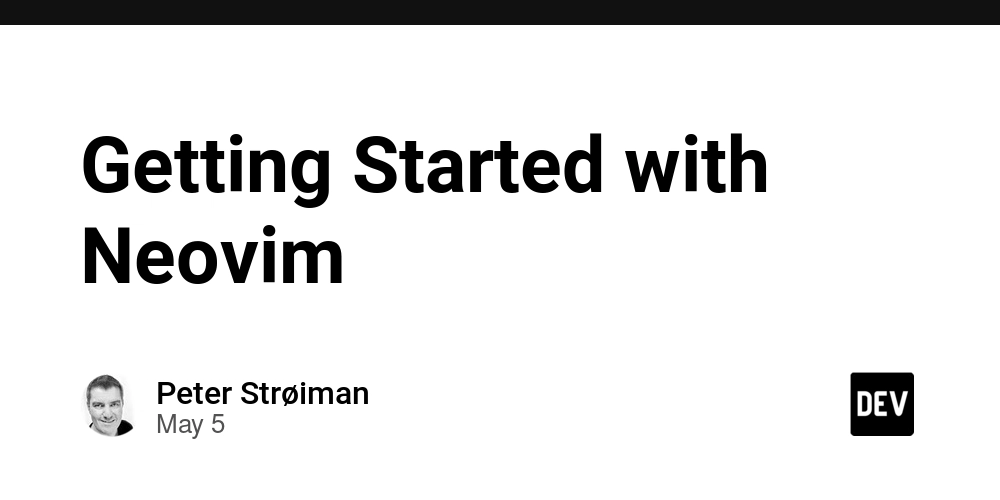CloudNativePG: Run PostgreSQL inside Kubernetes
Using CloudNativePG you can run your own PostgreSQL database inside your Kubernetes cluster. Install CloudNativePG To install CloudNativePG, first you should check the latest version on GitHub. Once you know what's the latest version, adapt the following command to it: kubectl apply --server-side -f \ https://raw.githubusercontent.com/cloudnative-pg/cloudnative-pg/release-1.25/releases/cnpg-1.25.1.yaml You can verify the installation running: kubectl get deploy -n cnpg-system cnpg-controller-manager Deploy a PostgreSQL cluster To deploy a PostgreSQL cluster, we need to create a yaml file with the basic deployment. vi postgres-basic-deployment.yaml This is an example from the official documentation: # Example of PostgreSQL cluster apiVersion: postgresql.cnpg.io/v1 kind: Cluster metadata: name: cluster-example spec: instances: 3 # Example of rolling update strategy: # - unsupervised: automated update of the primary once all # replicas have been upgraded (default) # - supervised: requires manual supervision to perform # the switchover of the primary primaryUpdateStrategy: unsupervised # Require 1Gi of space storage: size: 1Gi Next, we apply the deployment. kubectl apply -f cluster-example.yaml Once applied we can check the pods status. kubectl get pods Production-ready cluster To deploy CloudNativePG on production we've to make some changes. The deployment yaml file should be modified to include the configuration to enable backups. I'm going to use a S3 bucket to store the backups, but you can use another storage solution. Here is my production-ready CloudNativePG deployment example: apiVersion: postgresql.cnpg.io/v1 kind: Cluster metadata: name: postgresql-cluster namespace: postgresql spec: instances: 3 imageName: ghcr.io/cloudnative-pg/postgresql:17.4-13 primaryUpdateStrategy: unsupervised # Storage configuration storage: size: 1Gi # Monitoring monitoring: enablePodMonitor: true # Affinity rules to distribute pods across nodes affinity: enablePodAntiAffinity: true topologyKey: topology.kubernetes.io/zone # Backup configuration backup: barmanObjectStore: &barmanObjectStore destinationPath: s3://postgresql-k8s/ endpointURL: https://minio:9000 # Note: serverName version needs to be incremented # when recovering from an existing cnpg cluster serverName: ¤tCluster postgres17-v2 s3Credentials: accessKeyId: name: minio-credentials key: ACCESS_KEY_ID secretAccessKey: name: minio-credentials key: ACCESS_SECRET_KEY wal: compression: bzip2 encryption: AES256 data: compression: bzip2 encryption: AES256 jobs: 2 retentionPolicy: "14d" # Keep backups for 14 days # Note: previousCluster needs to be set to the name of the previous # cluster when recovering from an existing cnpg cluster bootstrap: recovery: source: &previousCluster postgres17-v1 # Note: externalClusters is needed when recovering from an existing cnpg cluster externalClusters: - name: *previousCluster barmanObjectStore:

Using CloudNativePG you can run your own PostgreSQL database inside your Kubernetes cluster.
Install CloudNativePG
To install CloudNativePG, first you should check the latest version on GitHub.
Once you know what's the latest version, adapt the following command to it:
kubectl apply --server-side -f \
https://raw.githubusercontent.com/cloudnative-pg/cloudnative-pg/release-1.25/releases/cnpg-1.25.1.yaml
You can verify the installation running:
kubectl get deploy -n cnpg-system cnpg-controller-manager
Deploy a PostgreSQL cluster
To deploy a PostgreSQL cluster, we need to create a yaml file with the basic deployment.
vi postgres-basic-deployment.yaml
This is an example from the official documentation:
# Example of PostgreSQL cluster
apiVersion: postgresql.cnpg.io/v1
kind: Cluster
metadata:
name: cluster-example
spec:
instances: 3
# Example of rolling update strategy:
# - unsupervised: automated update of the primary once all
# replicas have been upgraded (default)
# - supervised: requires manual supervision to perform
# the switchover of the primary
primaryUpdateStrategy: unsupervised
# Require 1Gi of space
storage:
size: 1Gi
Next, we apply the deployment.
kubectl apply -f cluster-example.yaml
Once applied we can check the pods status.
kubectl get pods
Production-ready cluster
To deploy CloudNativePG on production we've to make some changes.
The deployment yaml file should be modified to include the configuration to enable backups.
I'm going to use a S3 bucket to store the backups, but you can use another storage solution.
Here is my production-ready CloudNativePG deployment example:
apiVersion: postgresql.cnpg.io/v1
kind: Cluster
metadata:
name: postgresql-cluster
namespace: postgresql
spec:
instances: 3
imageName: ghcr.io/cloudnative-pg/postgresql:17.4-13
primaryUpdateStrategy: unsupervised
# Storage configuration
storage:
size: 1Gi
# Monitoring
monitoring:
enablePodMonitor: true
# Affinity rules to distribute pods across nodes
affinity:
enablePodAntiAffinity: true
topologyKey: topology.kubernetes.io/zone
# Backup configuration
backup:
barmanObjectStore: &barmanObjectStore
destinationPath: s3://postgresql-k8s/
endpointURL: https://minio:9000
# Note: serverName version needs to be incremented
# when recovering from an existing cnpg cluster
serverName: ¤tCluster postgres17-v2
s3Credentials:
accessKeyId:
name: minio-credentials
key: ACCESS_KEY_ID
secretAccessKey:
name: minio-credentials
key: ACCESS_SECRET_KEY
wal:
compression: bzip2
encryption: AES256
data:
compression: bzip2
encryption: AES256
jobs: 2
retentionPolicy: "14d" # Keep backups for 14 days
# Note: previousCluster needs to be set to the name of the previous
# cluster when recovering from an existing cnpg cluster
bootstrap:
recovery:
source: &previousCluster postgres17-v1
# Note: externalClusters is needed when recovering from an existing cnpg cluster
externalClusters:
- name: *previousCluster
barmanObjectStore:
<<: *barmanObjectStore
serverName: *previousCluster
resources:
requests:
memory: "512Mi"
cpu: "1"
limits:
memory: "1Gi"
cpu: "2"
---
apiVersion: postgresql.cnpg.io/v1
kind: ScheduledBackup
metadata:
name: postgresql-cluster-scheduled-backup
namespace: postgresql
spec:
schedule: "0 0 0 * * 0" # Every Sunday at midnight
backupOwnerReference: self
cluster:
name: postgresql-cluster
I want to deploy the CloudNativePG cluster on a namespace named postgres. So I run the following command:
kubectl create namespace postgresql
Also before applying the deployment, we should set the ACCESS_KEY_ID and ACCESS_SECRET_KEY secrets.
kubectl create secret generic minio-credentials \
--namespace postgresql \
--from-literal=ACCESS_KEY_ID=YOUR_ACCESS_KEY_ID \
--from-literal=ACCESS_SECRET_KEY=YOUR_ACCESS_SECRET_KEY
Running the following command we can verify the secrets have been created:
kubectl get secret minio-credentials -n postgresql
On-demand backup
To perform a manual backup of the cluster, we can deploy a backup service:
apiVersion: postgresql.cnpg.io/v1
kind: Backup
metadata:
name: postgresql-cluster-backup
namespace: postgresql
spec:
cluster:
name: postgresql-cluster
kubectl apply -f postgesql-backup.yaml
Once deployed the backup of the cluster will start.
kubectl describe backup -n postgresql postgresql-cluster-backup
Expose cluster via a node port
If we want to expose the PostgreSQL cluster to the outside, one option is to define a node port.
apiVersion: v1
kind: Service
metadata:
name: postgresql-nodeport
namespace: postgresql
spec:
type: NodePort
selector:
cnpg.io/cluster: postgresql-cluster
role: primary
ports:
- name: postgres
port: 5432
targetPort: 5432
nodePort: 30432
Deploying this service will expose our postgresql-cluster at the port 30432. To connect we can use any node IP, as the port will be available at all nodes.











































































![New Apple iPad mini 7 On Sale for $399! [Lowest Price Ever]](https://www.iclarified.com/images/news/96096/96096/96096-640.jpg)
![Apple Developing Battery Case for iPhone 17 Air Amid Battery Life Concerns [Report]](https://www.iclarified.com/images/news/97208/97208/97208-640.jpg)
![Apple to Split iPhone Launches Across Fall and Spring in Major Shakeup [Report]](https://www.iclarified.com/images/news/97211/97211/97211-640.jpg)
![Apple to Move Camera to Top Left, Hide Face ID Under Display in iPhone 18 Pro Redesign [Report]](https://www.iclarified.com/images/news/97212/97212/97212-640.jpg)











![The Material 3 Expressive redesign of Google Clock leaks out [Gallery]](https://i0.wp.com/9to5google.com/wp-content/uploads/sites/4/2024/03/Google-Clock-v2.jpg?resize=1200%2C628&quality=82&strip=all&ssl=1)
![What Google Messages features are rolling out [May 2025]](https://i0.wp.com/9to5google.com/wp-content/uploads/sites/4/2023/12/google-messages-name-cover.png?resize=1200%2C628&quality=82&strip=all&ssl=1)

































































































_Inge_Johnsson-Alamy.jpg?width=1280&auto=webp&quality=80&disable=upscale#)


























































































































![[The AI Show Episode 145]: OpenAI Releases o3 and o4-mini, AI Is Causing “Quiet Layoffs,” Executive Order on Youth AI Education & GPT-4o’s Controversial Update](https://www.marketingaiinstitute.com/hubfs/ep%20145%20cover.png)











































































































































![Re-designing a Git/development workflow with best practices [closed]](https://i.postimg.cc/tRvBYcrt/branching-example.jpg)




















![From Art School Drop-out to Microsoft Engineer with Shashi Lo [Podcast #170]](https://cdn.hashnode.com/res/hashnode/image/upload/v1746203291209/439bf16b-c820-4fe8-b69e-94d80533b2df.png?#)



![[DEALS] Microsoft 365: 1-Year Subscription (Family/Up to 6 Users) (23% off) & Other Deals Up To 98% Off – Offers End Soon!](https://www.javacodegeeks.com/wp-content/uploads/2012/12/jcg-logo.jpg)
































































































